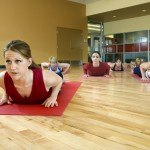 Let the Olympic athletes inspire your fitness, and your food! Enjoy this golden-shake to fuel your body and your mind. What better way to enjoy basking in the warm summer sun than with a cool smoothie in hand that’s both nutritious and delicious! Inspired by beautiful golden sunsets and incredible athletes striving for the gold, this simple smoothie is the perfect sweet treat. Fuel your body with nutrition to reach your own personal best. Enjoy before any outdoor activity or adventure this summer or use as a post-workout snack.
Let the Olympic athletes inspire your fitness, and your food! Enjoy this golden-shake to fuel your body and your mind. What better way to enjoy basking in the warm summer sun than with a cool smoothie in hand that’s both nutritious and delicious! Inspired by beautiful golden sunsets and incredible athletes striving for the gold, this simple smoothie is the perfect sweet treat. Fuel your body with nutrition to reach your own personal best. Enjoy before any outdoor activity or adventure this summer or use as a post-workout snack.
What you’ll need-
6oz non-fat honey greek yogurt
1/2 banana
1 ripe mango
1/2 cup pineapple
1/8 cup coconut water
1/4 tsp cinnamon
Simply combine all ingredients in a blender, blend until smooth and enjoy!
Jessica Matthews, MS, E-RYT, is an exercise physiologist, yoga teacher, group fitness instructor, personal trainer, adjunct professor, blogger and fitness personality. Jessica strives to open minds, ignite passion and inspire the world to health and fitness through purposeful movement, quality nutrition and kind words. She has been featured as a fitness expert on CNN and has been quoted in numerous publications including Shape, Self, Oxygen and Oprah.com. For more health and fitness information, follow Jessica at www.twitter.com/fitexpertjess.
 Subscribe
Subscribe







